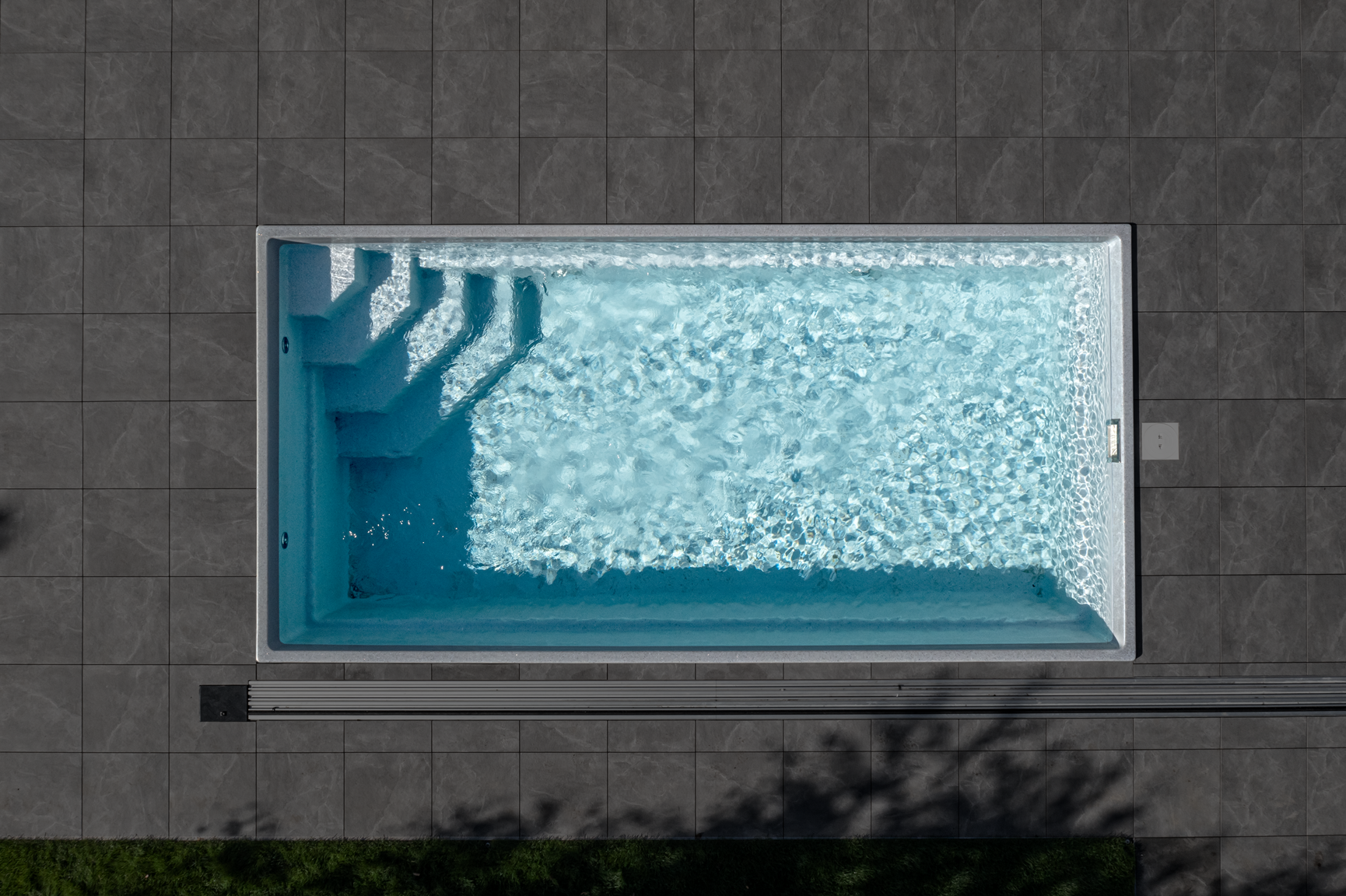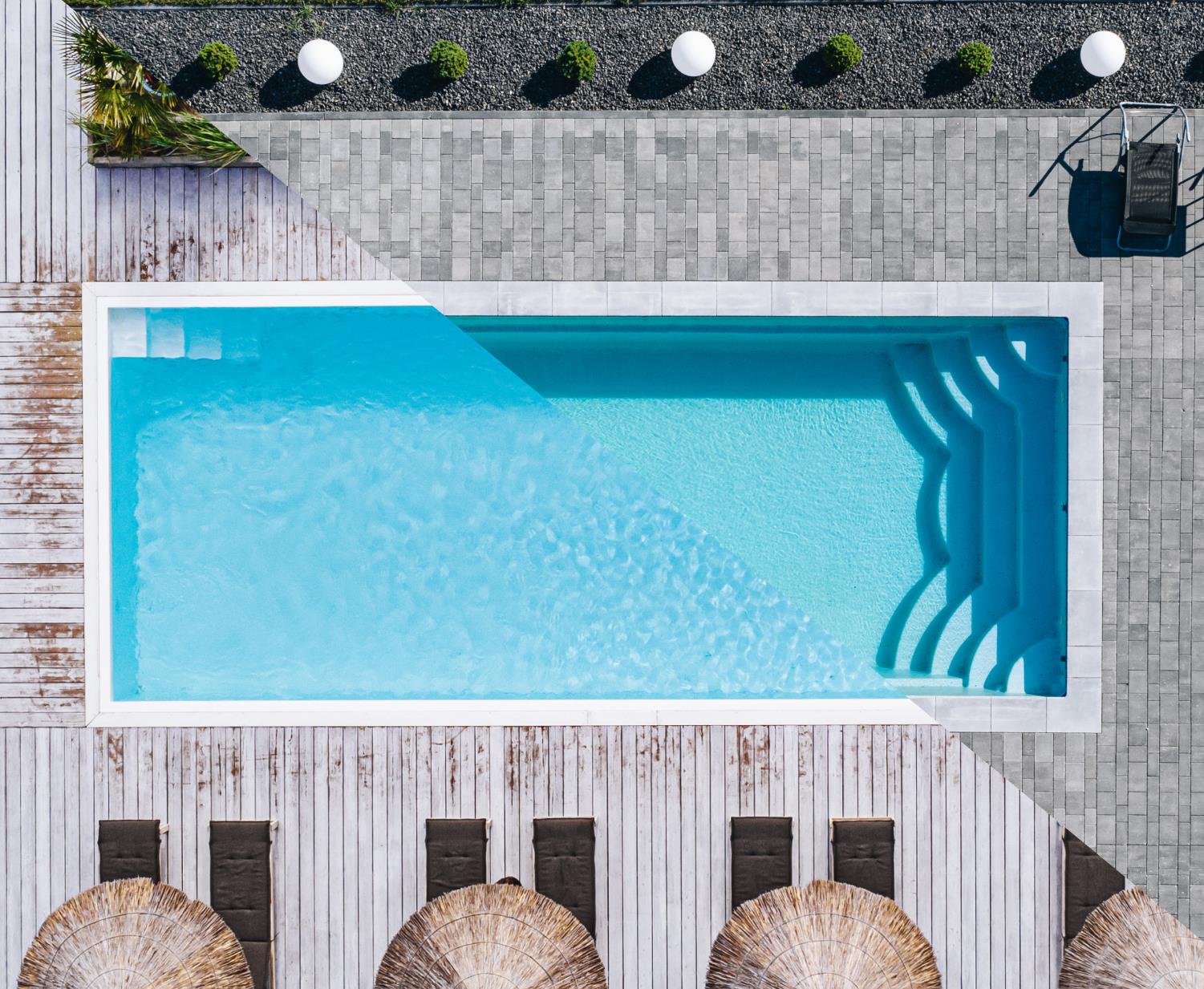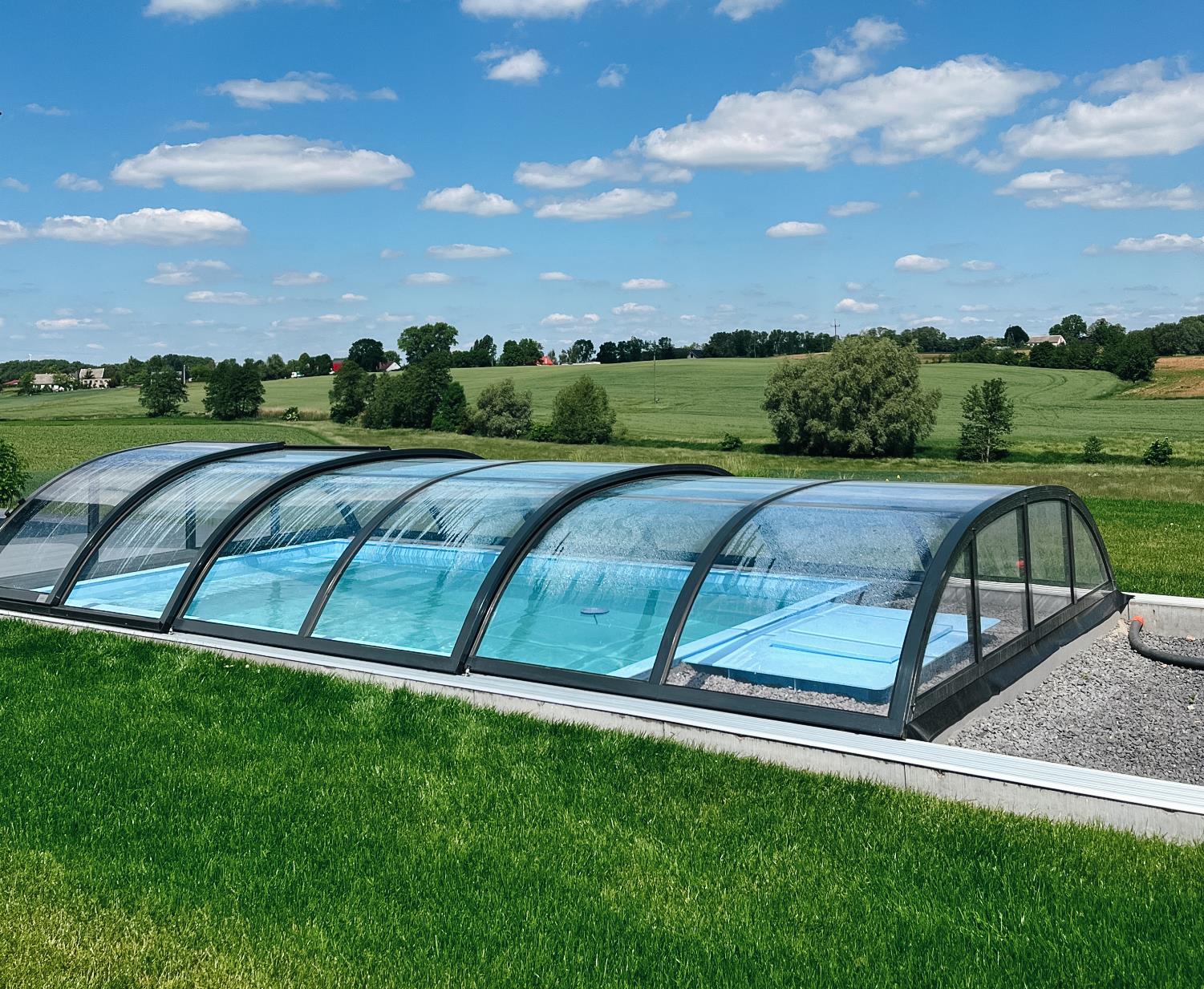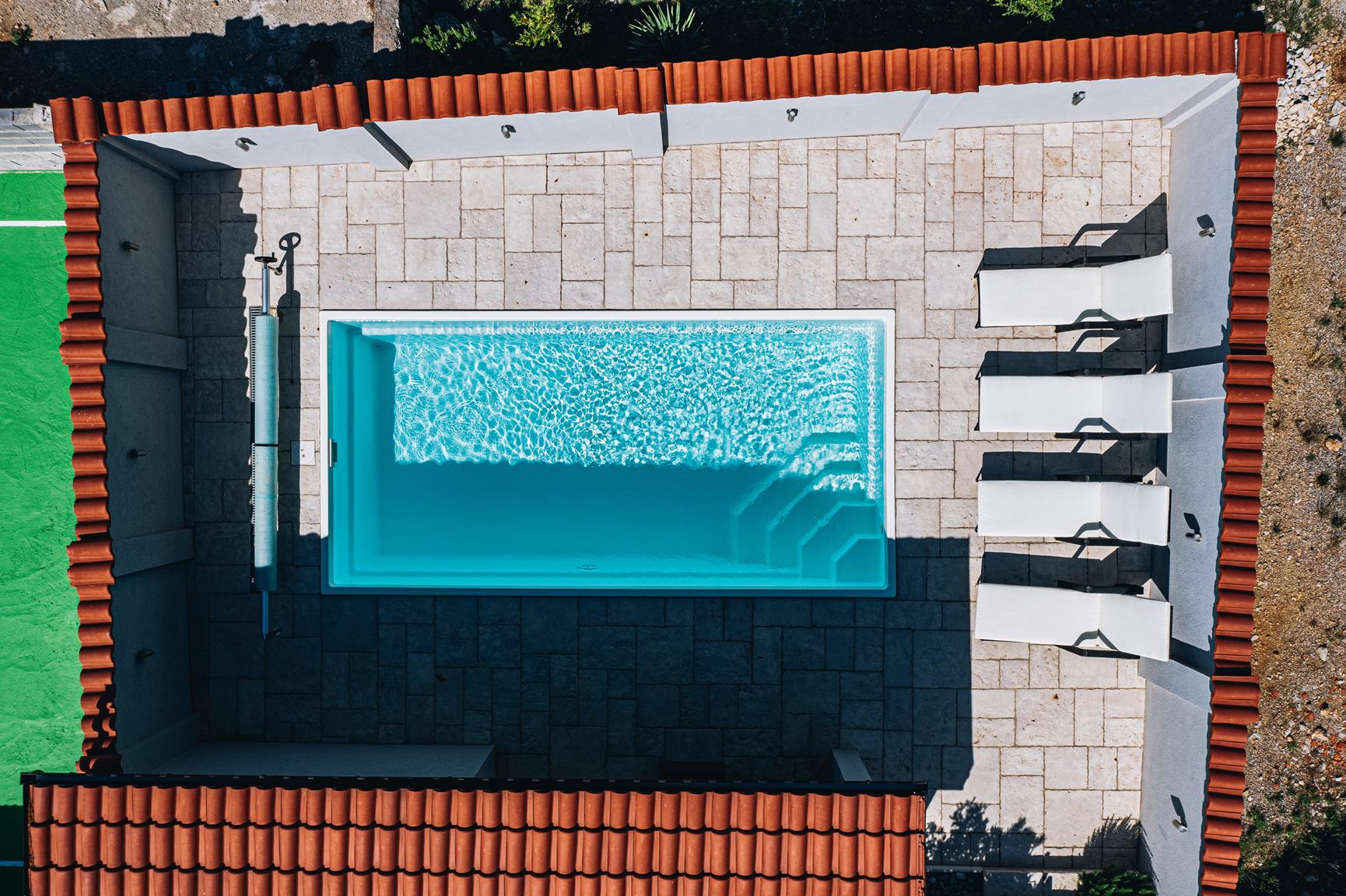Green water in a pool is usually caused by excessive algae growth, which happens due to insufficient chlorine or improper water pH levels. Algae are microscopic aquatic plants that flourish in warm, chemically unbalanced water. While algae primarily affect the pool’s appearance, they can also pose health risks to swimmers. Green water can harbor algae, bacteria, microorganisms, and various pathogens. If you notice a change in your pool’s water color or it starts turning green, it’s a sign that immediate action is needed.
If you notice clusters of algae starting to form or if the water is already fully green, it’s crucial to act quickly to prevent further algae growth. Follow these steps to restore your pool’s clarity:
By following these steps, you can restore your pool’s water clarity and prevent algae from returning.
Yes, green pool water can be prevented with proper maintenance. Here’s how:
By following these preventive measures, you can significantly reduce the risk of green water and maintain a clean, healthy pool.
Green pool water problems are one of the more common swimming pool water problems, so preventing green pool water is the best way to keep your water crystal clear. To get rid of green pool water, it is best to disinfect the pool water with pool shock chlorination. It is best to carry out green pool water cleaning in the evening. UV radiation from the sun breaks down the chlorine, reducing its effectiveness. Make sure the filter pump is switched on and will run throughout the night to ensure adequate water circulation. Read carefully the instructions on the packaging of the product with which you will carry out chlorine shocking.
Additional notes:
Safety: Always wear protective gloves and goggles when working with pool chemicals.
Cleaning the filter: Check and clean the pool filter regularly.
Repeated shocking: If the water is still green after the first shocking, the process may need to be repeated.
The recommended pool chlorine concentration level is 0.3 to 0.6 mg/l. The chlorine level at which no water problems occur is between 0.3 and 1.0 mg/l.
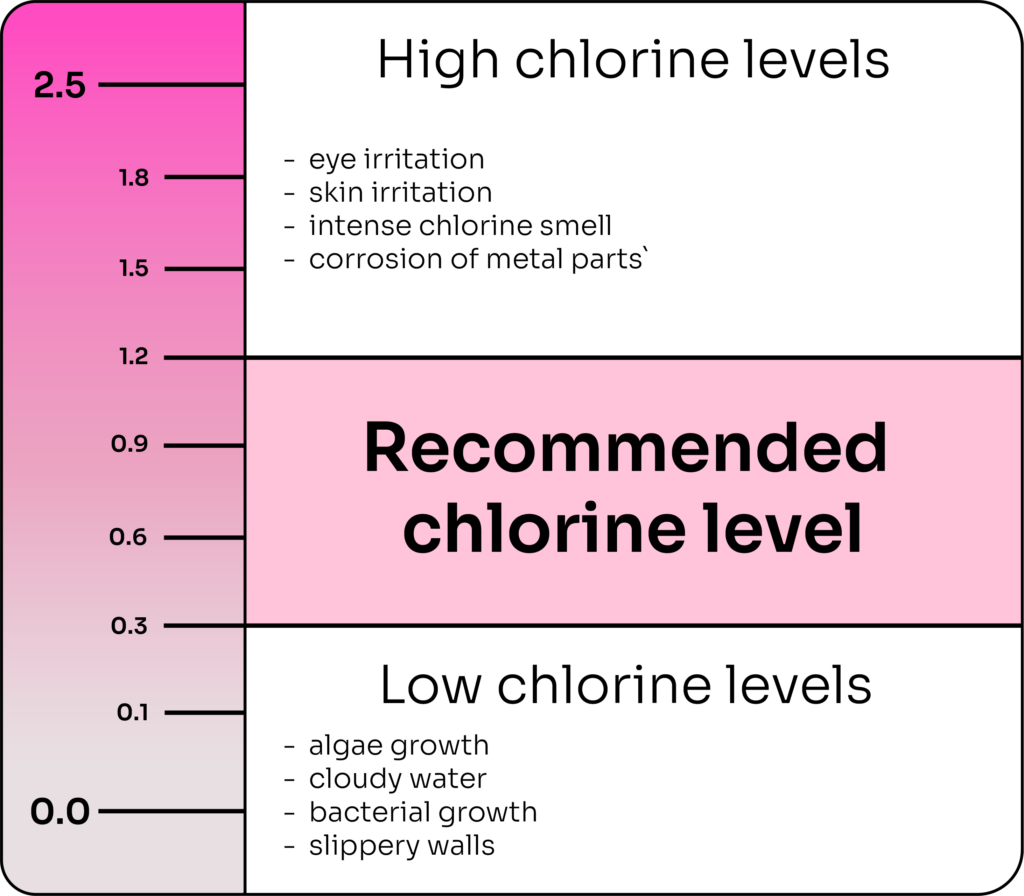
Green pool water after rain is often caused by chemical compounds in the rain, particularly phosphates, which act as a nutrient source for algae.
Excessive chlorine can lead to green pool water. Overdosing chlorine produces chloramines, which impart a green tint to the water. Chloramines are created when chlorine fails to fully oxidize certain organic compounds in the water, leaving them unneutralized. These byproducts can irritate the skin, cause red eyes, and result in a burning sensation in the nose or throat.
A natural remedy to help clear green water and reduce chemical use is citric acid. Citric acid can lower the pH of the pool water, which aids in controlling algae and restoring water clarity.
Green pool water impacts both the appearance and safety of the pool. To prevent such issues, regularly monitor and maintain pool water quality. Consistent chlorine use, along with testing and adjusting chlorine and pH levels, will help prevent algae growth and ensure safe swimming conditions.

Are you considering buying a swimming pool? Or do you already have one in your garden? Our newsletter is your source for interesting facts, discounts, and practical pool tips!
